Fictional Address: PIN Code 400 004
Khemraj Bhavan, Khetwadi from Shikari , the classic Mumbai book in Kannada by Yeshwant Chittal.
I finished reading Yeshwant Chittal’s Shikari or The Hunt in 2018. This Kannada classic, set in late 70s Mumbai, continues to live within me for its vivid portrayal of the city and life in the city. I listened to the original Kannada version of Storytel and fell in love with it and the characters. I wouldn’t necessarily say that the book is ahead of its time simply because it appears contemporary in both translation and the original text. Ultimately, the readers discover writers and their significance within the context of their reading journeys.
I would say that the book's setting in Mumbai is a delight to read that readers of Ghachar Ghochar by Vivek Shanbag or Jayant Kaikini’s translations of Mumbai short stories will immediately connect to. It’s not just their intricate connections to the city's locales but also how our mind connects with the city and the complexities of human connections here and in society that paint our relationship with our place.
Chittal places details in his books, too, including this one. Among the various places detailed, the chawl called Khemraj Bhavan stands out. Located in the Khetwadi area of South Mumbai, this 'chawl' (a large building housing multiple small tenements for the working class), common across Asia, plays a crucial role in the story. The protagonist, Naganath, or Nagappa, resides here despite being relatively well-off at that point in his life. The chawl also serves as his retreat, adding layers to his character. You must explore the book to discover whether Nagappa is the hunter or the hunted. The translated version is available online.
After finishing the book, I felt compelled to see if the places Chittal had described so vividly were real. This curiosity led me to explore the streets of Khetwadi, especially around Khemraj Bhavan, which exists! Now, I frequently return to these streets, particularly during the Ganesh Festival, and this part of Mumbai has become one of my favourite places to wander.
Khetwadi
Khet - field. A place that was not built over until 1838 when it began to attract residents and it rapidly developed after the construction of Falkland and Charni Roads.
- Samuel T. Sheppard’s Bombay Place-Names and Street-Names
Chittal's work has significantly impacted contemporary Kannada literature, shaping the voices of renowned writers like Vivek Shanbhag and Jayant Kaikini, who have acknowledged his influence in their interviews. As a Mumbaikar and a person from Karnataka, I feel irrational pride in the book and can’t help it. To me, Chittal’s style, in some ways, resembles that of Natsume Soseki and the book Sanshiro, in which he beautifully captures the essence of cities and the nuances of adjusting to urban life. Much like the depictions of Tokyo from the point of view of a young man from a smaller town or village, his relationship with it, his portrayal of Mumbai resonates with a delicate yet profound understanding of the city and its inhabitants. Yeshwant Chittal’s other Mumbai classic, Purushotamma, is another book that takes this relationship to another level.
Chittal's portrayal of Mumbai in the book Purushottama complements the story of Nagappa in Shikari by providing a deeper understanding of the city's socio-political landscape. While Shikari focuses on personal alienation and the impact of caste and corruption (there’s a clue about Nagappa’s character ;), Purushottama broadens the scope to include the systemic issues within the real estate sector, showcasing the interconnectedness of various societal problems. If you are a migrant from the Karavali Coast - Mangalore/Udupi/Honnavar/Gokarna/Karwar belt if the Arabian Sea universe, speaking any of the rainbow of languages, these two books are for you.
Images from Khetwadi.
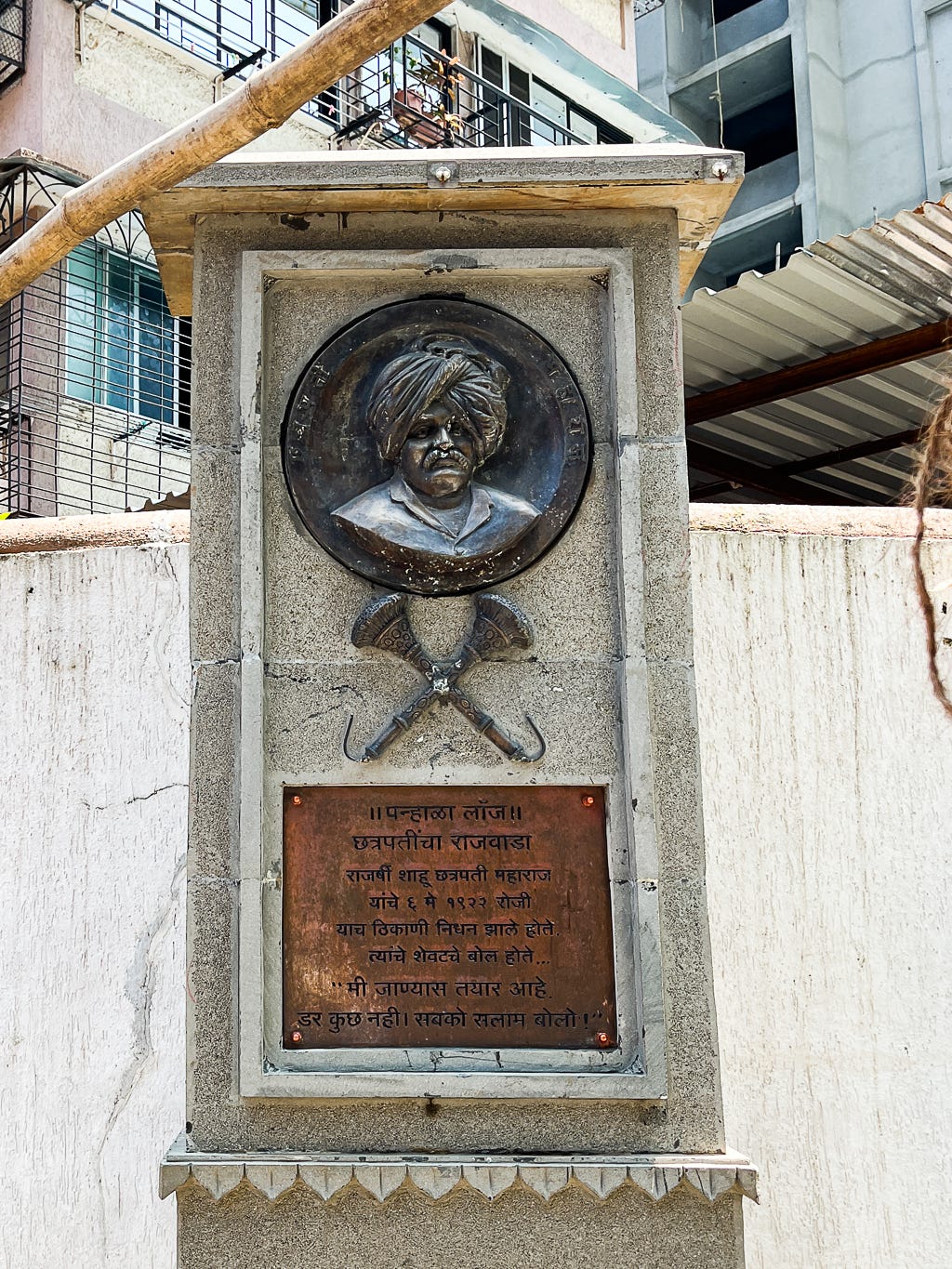
Navakal Lane.
Navakaal is a popular Marathi daily, originally published from here.
Steel and metal traders own most of the shops along Khetwadi main road.
Khetwadi was very diverse. People from all over India call it their home. However, it is getting gentrified and its the richer trading communities who now occupy the tall towers replacing the chawls here.
The advertising messages here during the annual Ganesh Festival suggest that the original inhabitants are moving to the suburbs and the outer Greater Mumbai region.
The annual Ganesh Festival fo Khetwadi and the many idols here are quite popular. This year’s welcome message.
Preparations for 2024 Ganeshotsav.
Ganesh pandals here are not commercial money-making activities like in Parel of Dadar, but they retain the original flavour that is drowned in the noise in places like Parel and Dadar.
The older Khetwadi was a much more colourful place. The red light district was next door. The main cinemas in the city used to be just around the corner.
Further reading: Mayanagari. Mumbai through stories and writings in different languages that call this city home.
The end. Samath. Shubham.
That’s all, folks!





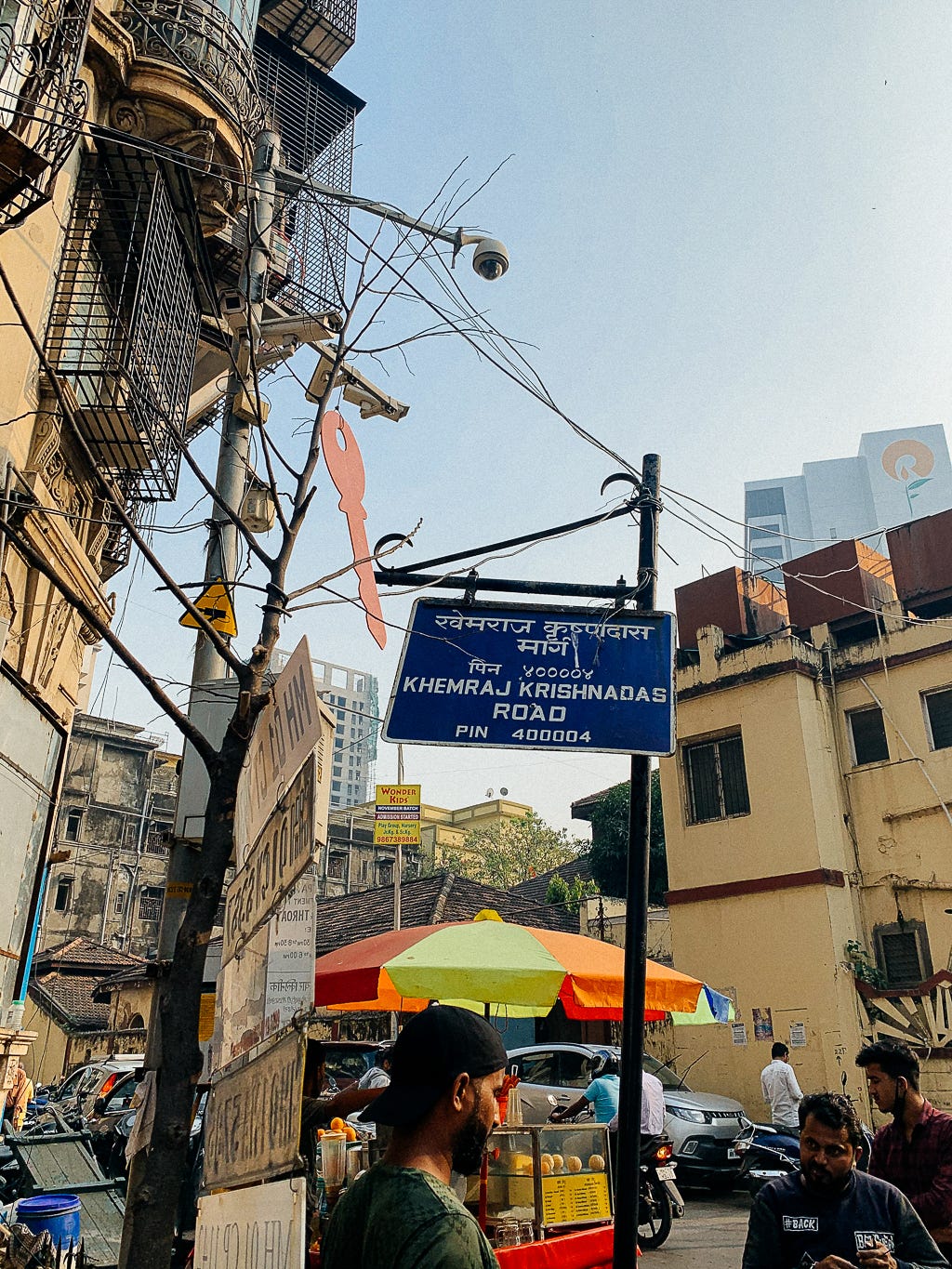
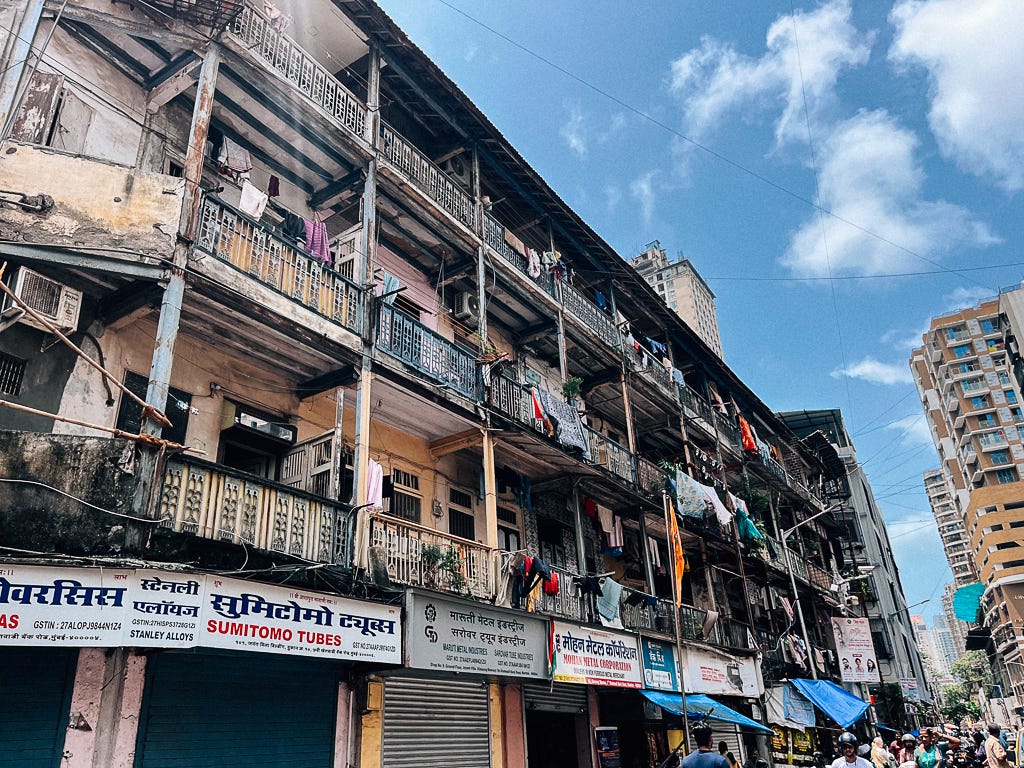
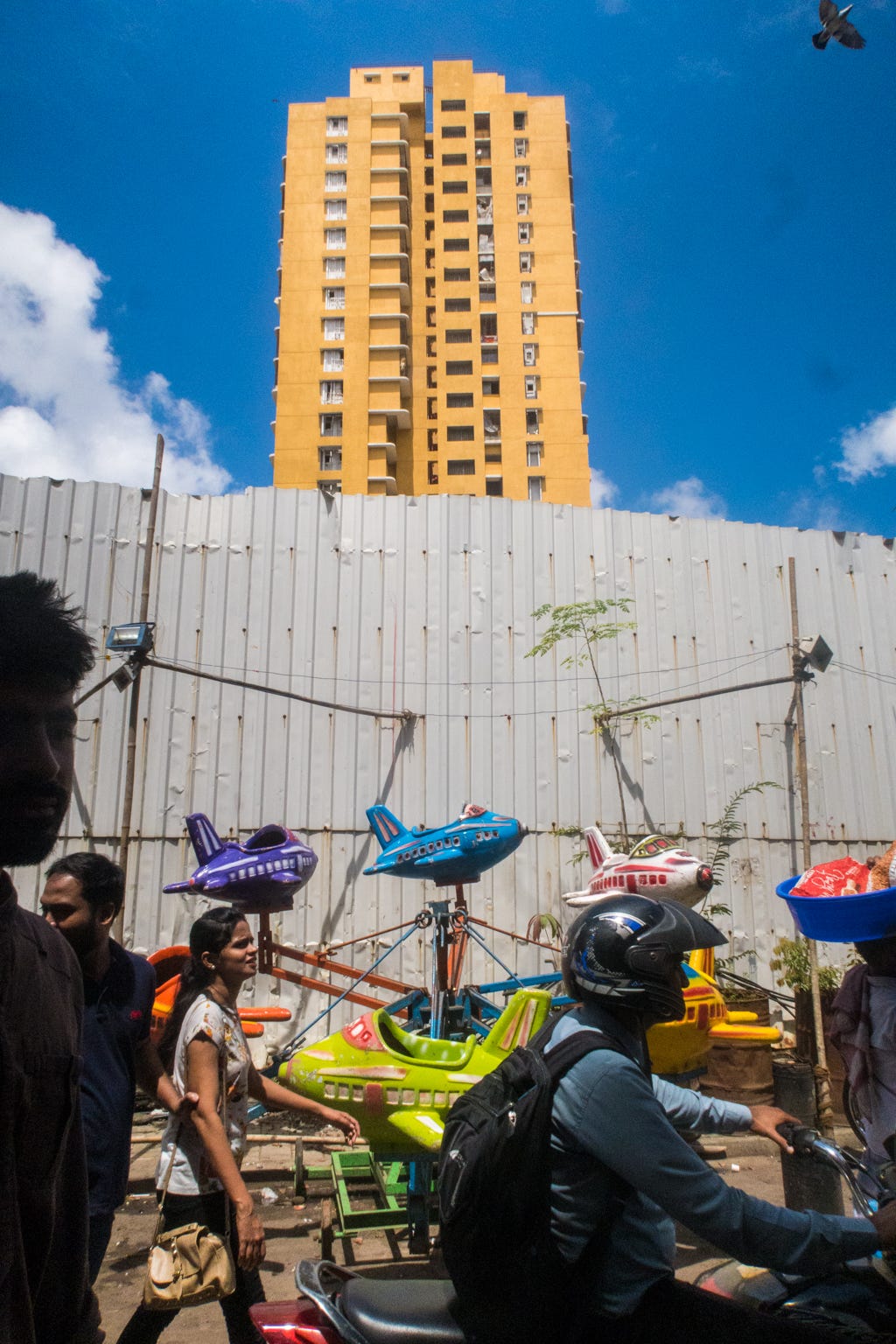
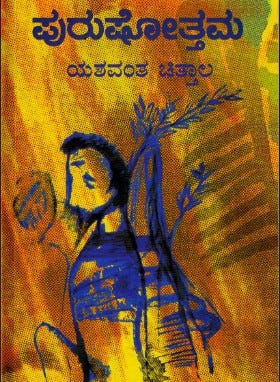
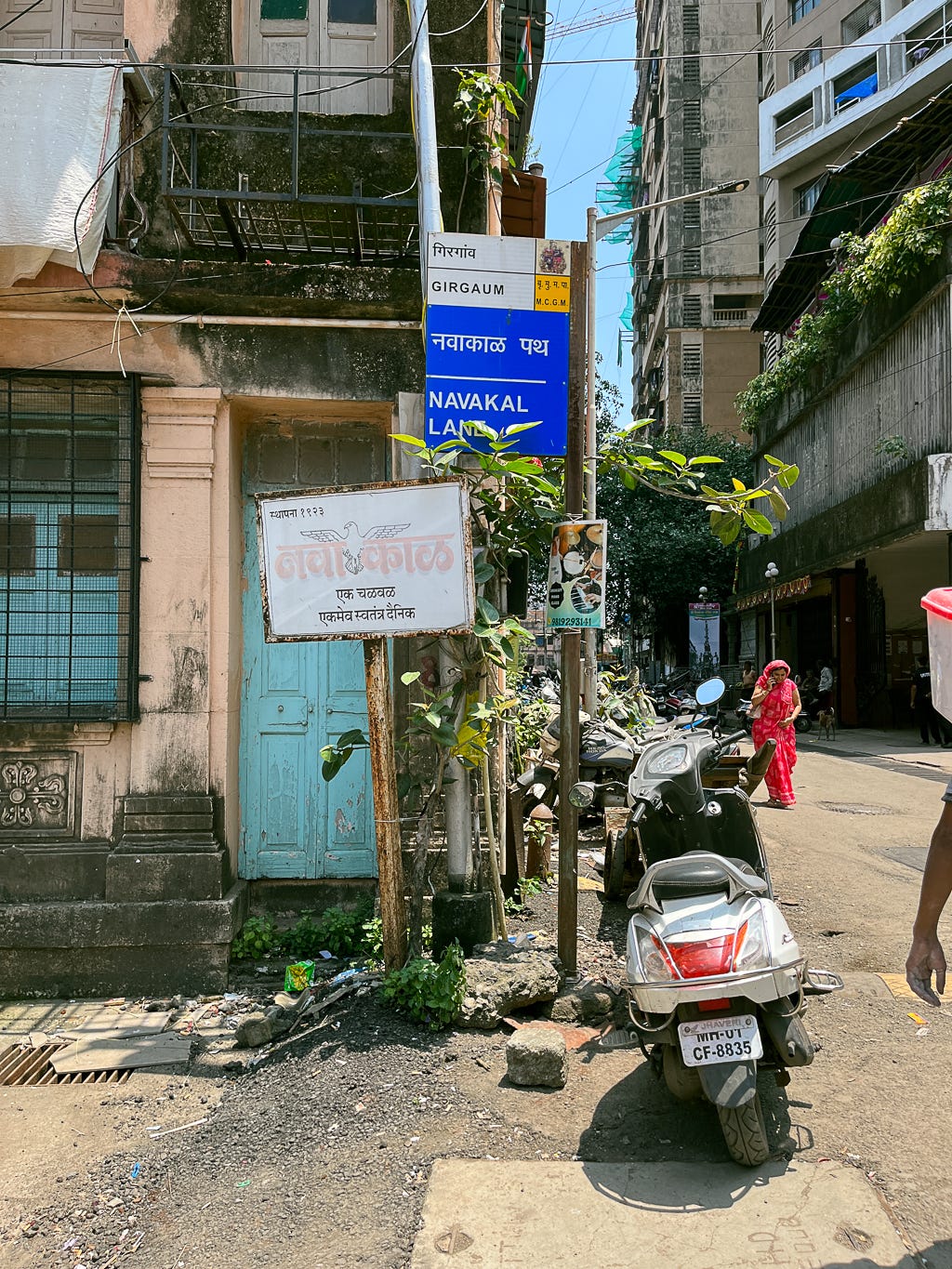
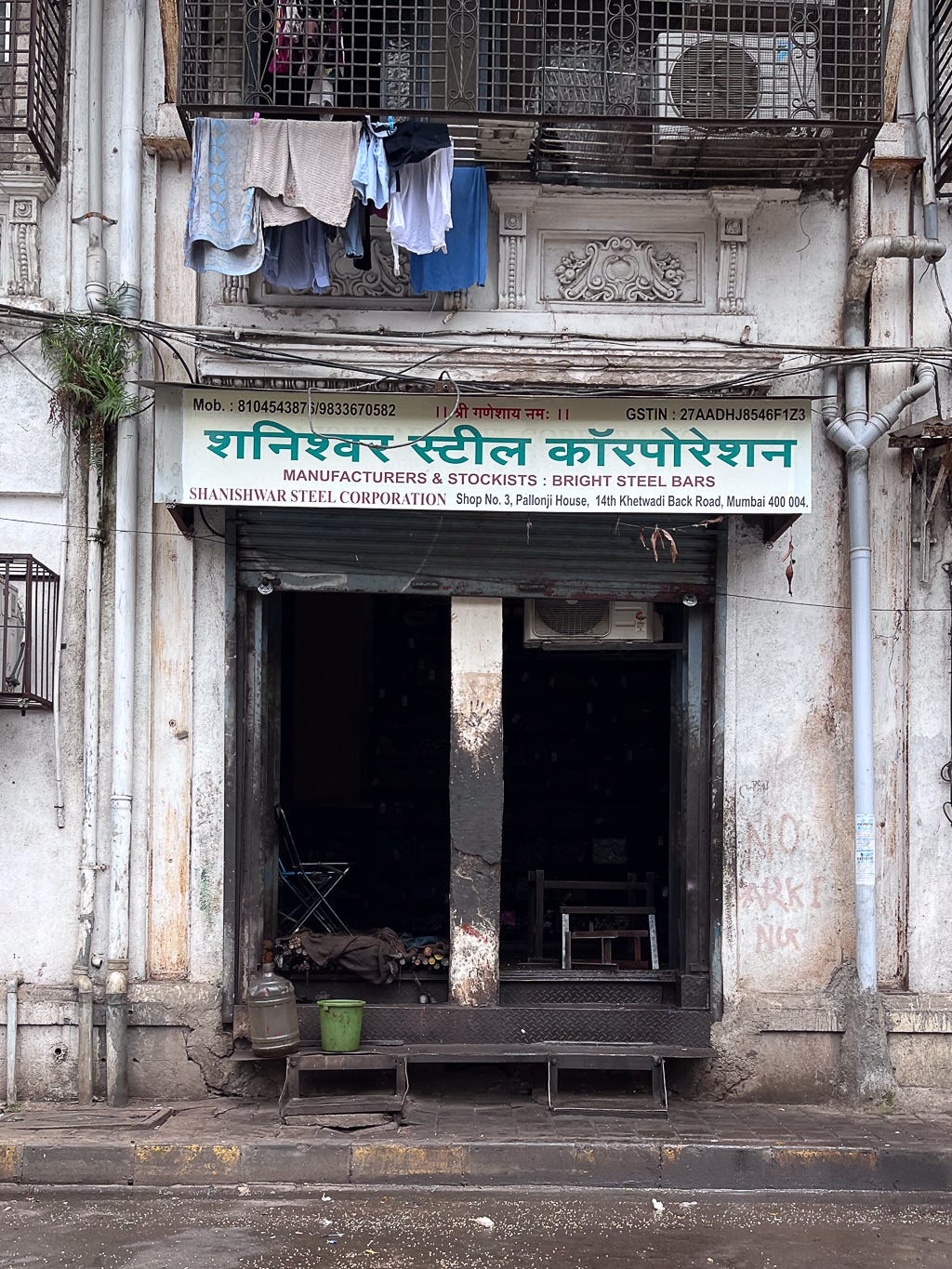


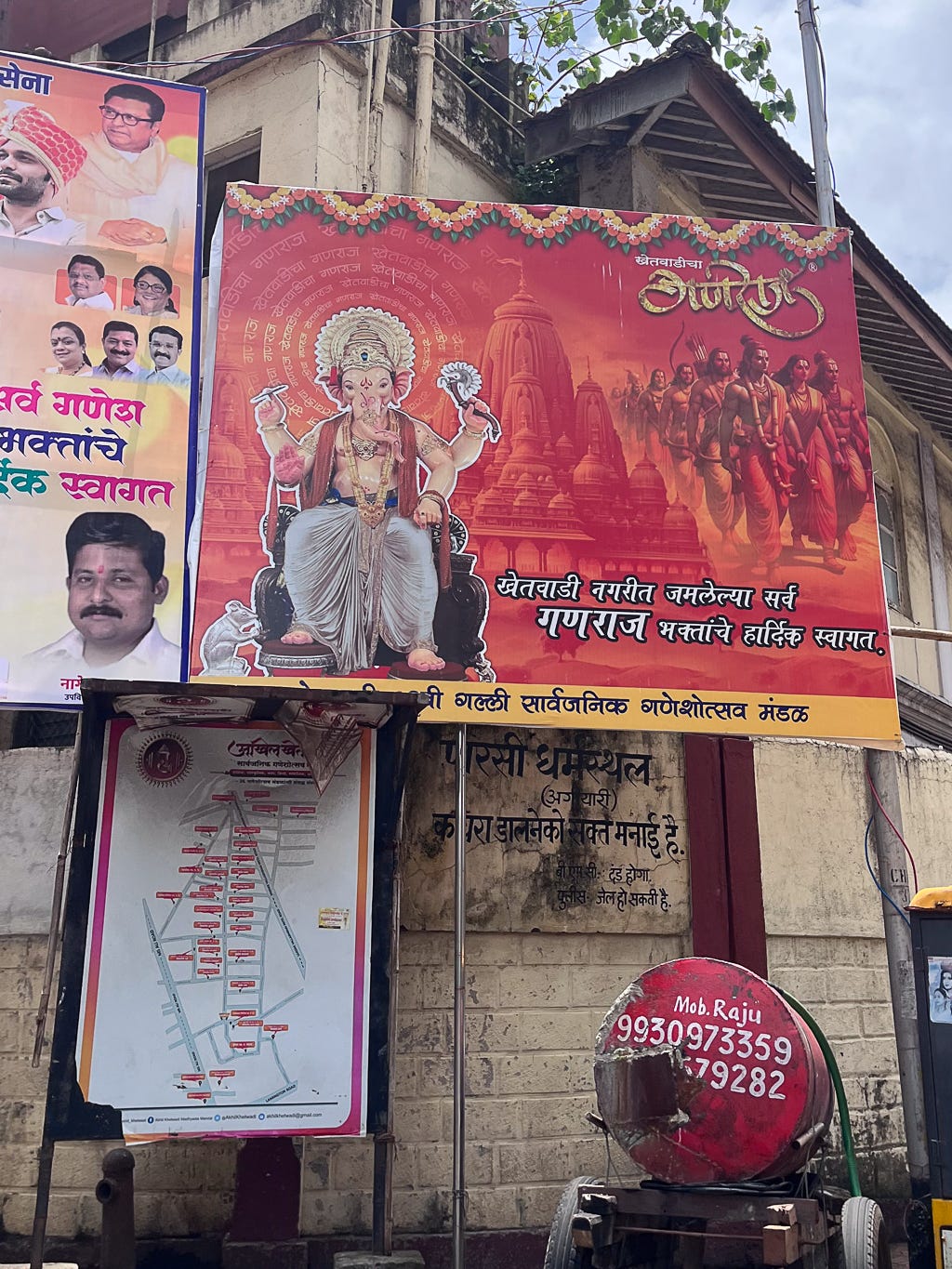

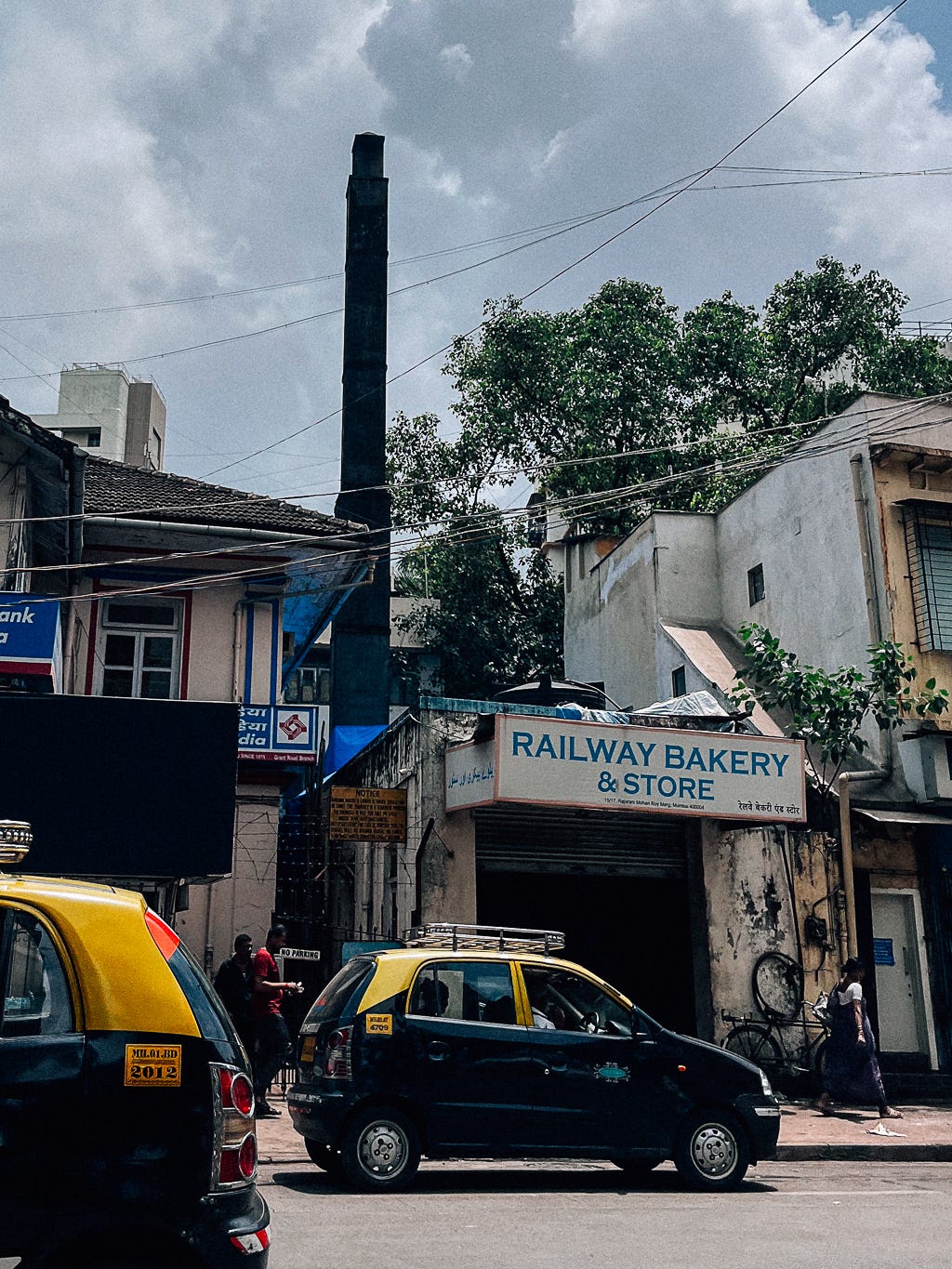



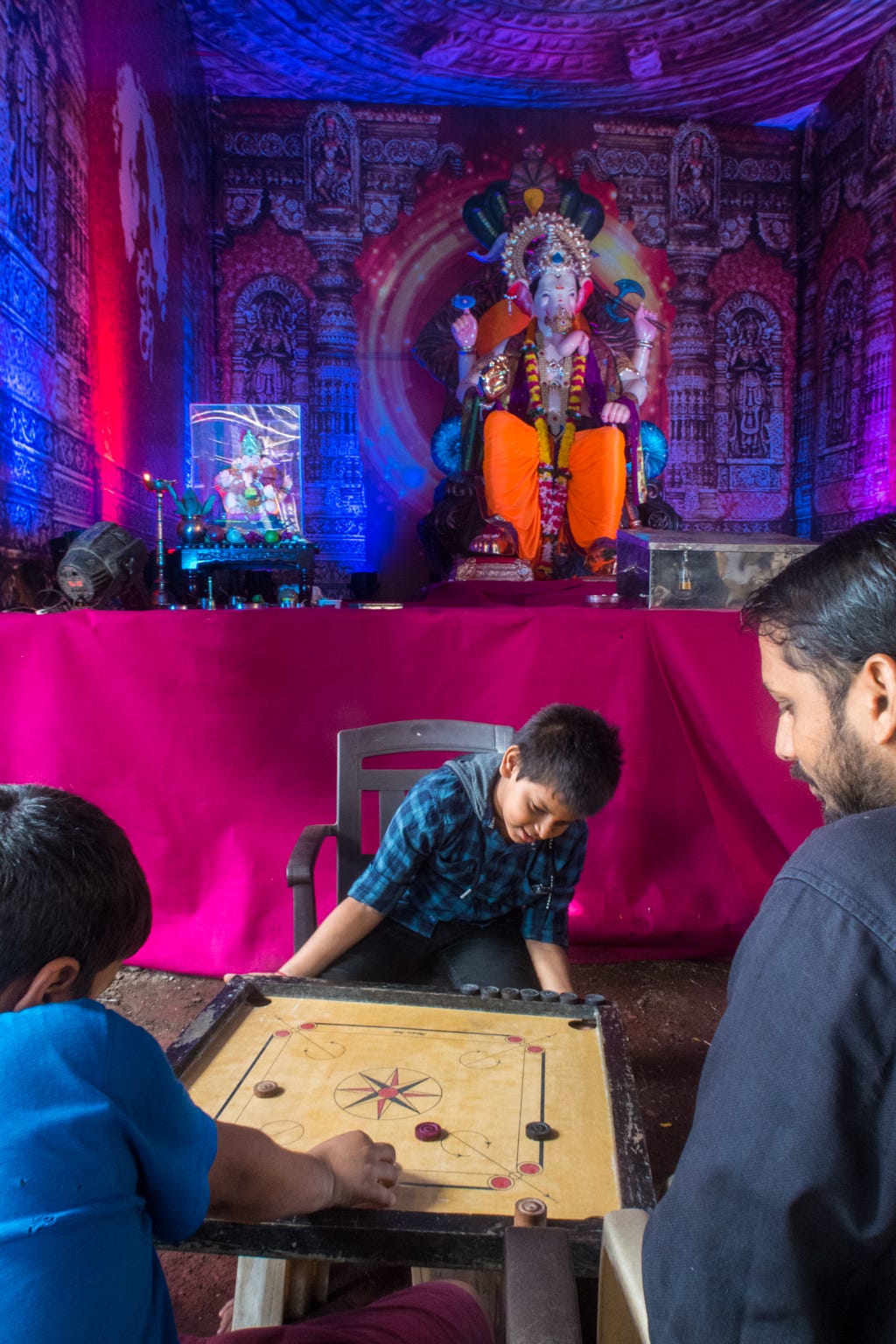
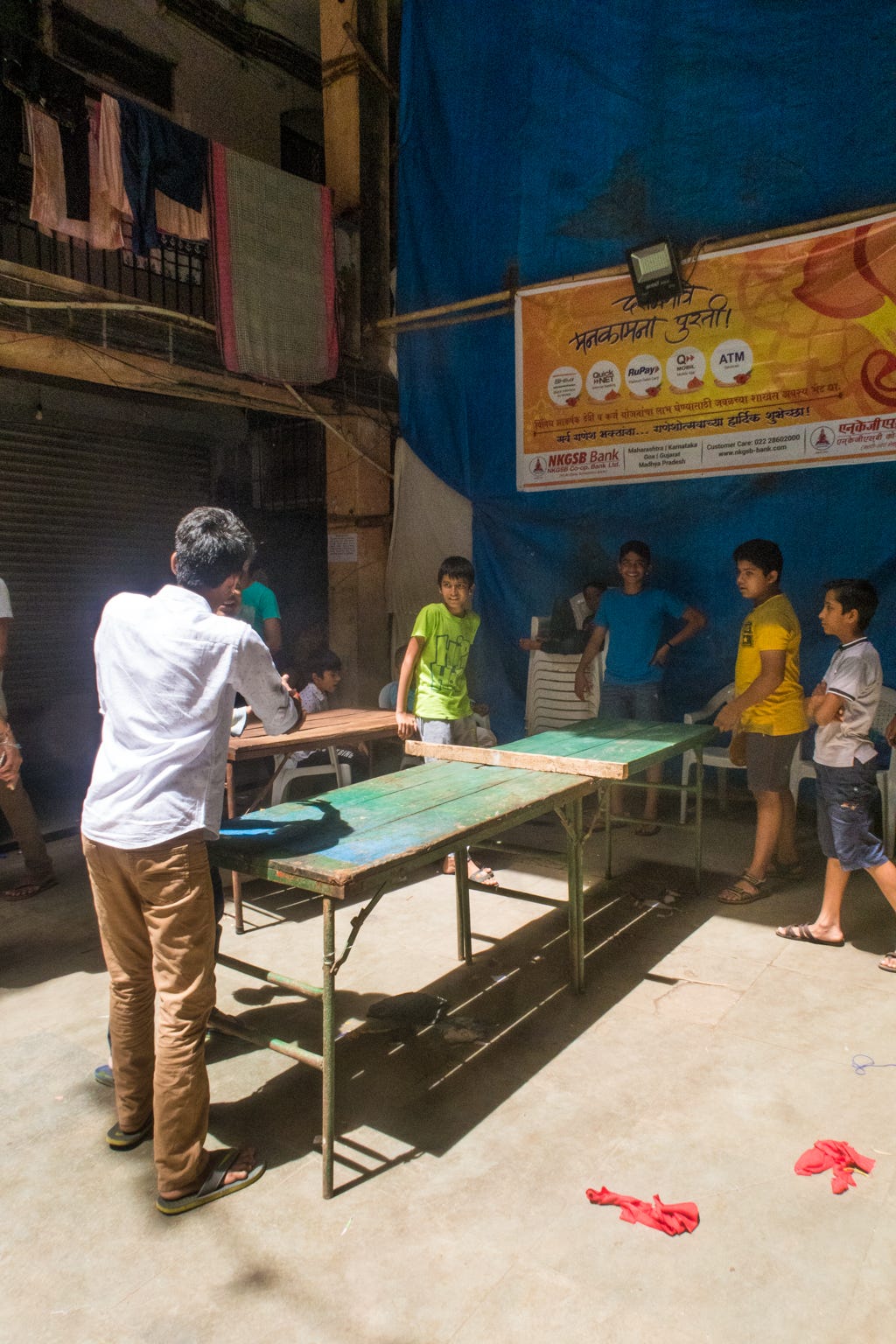

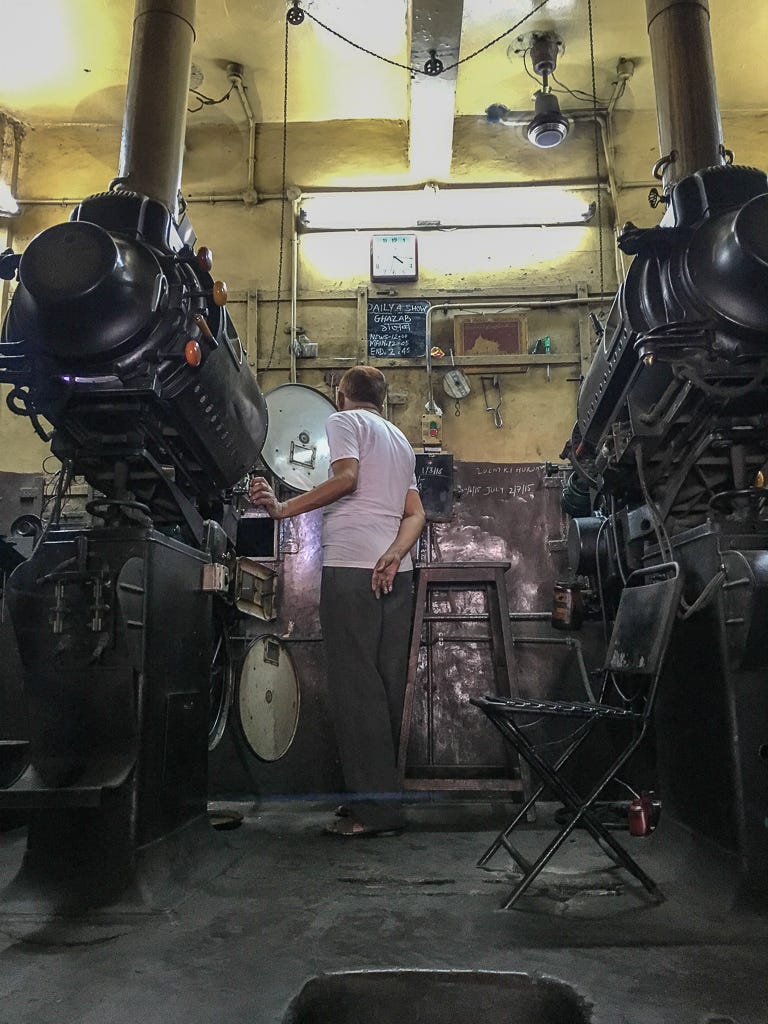

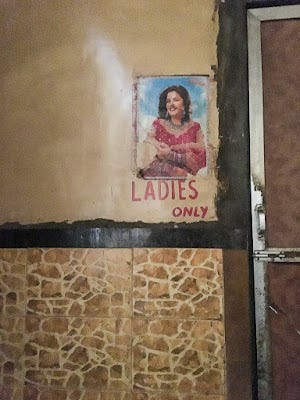
Thank you. That’s probably the best way to discover the city. Getting a little lost while trying to find a place.
As always love the photographs. I always get a proper visual treat!!